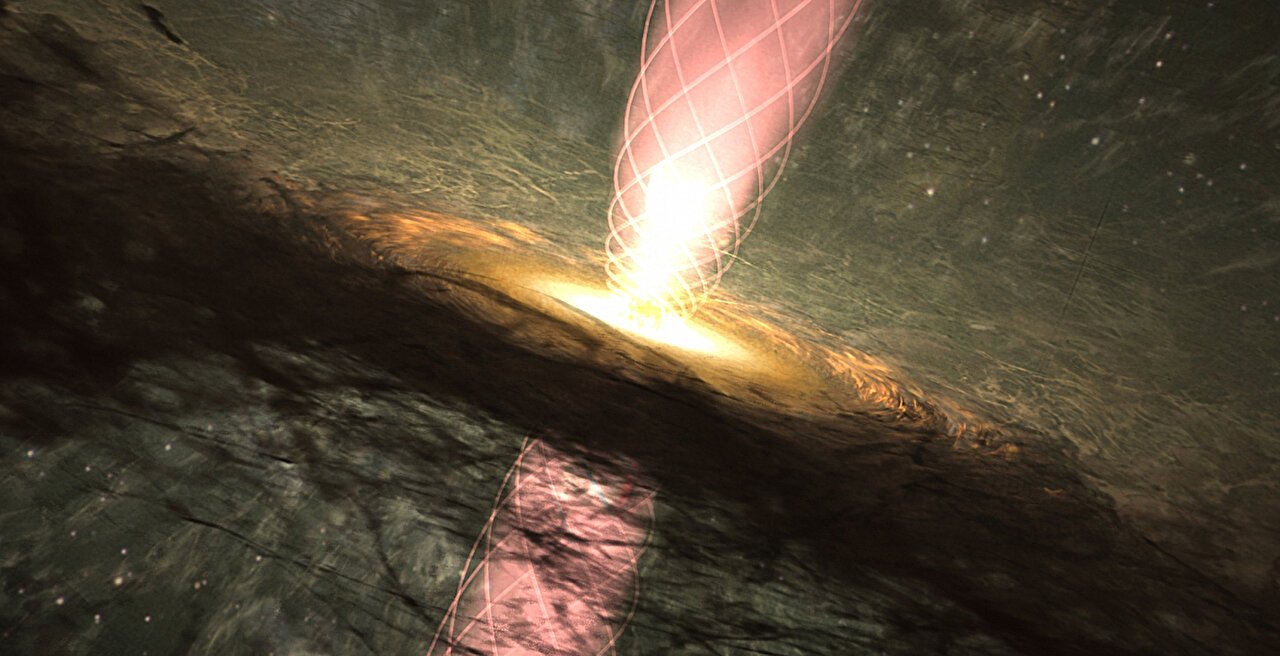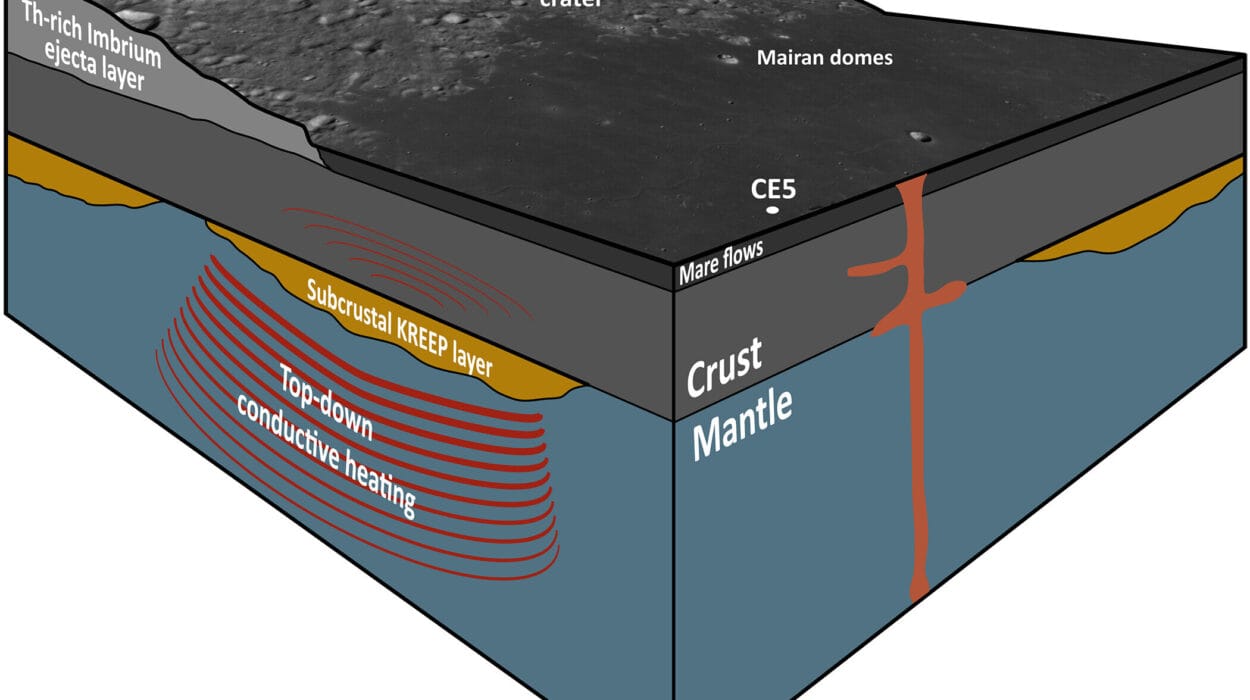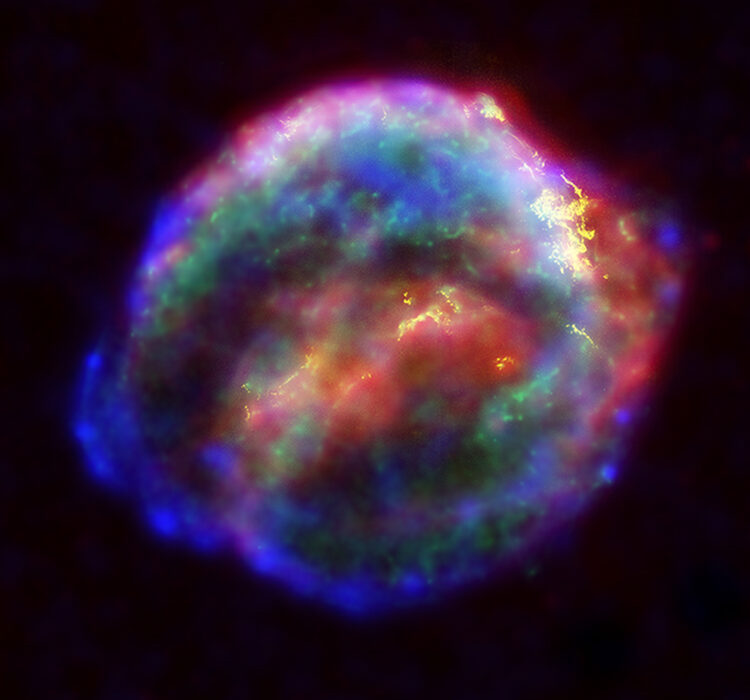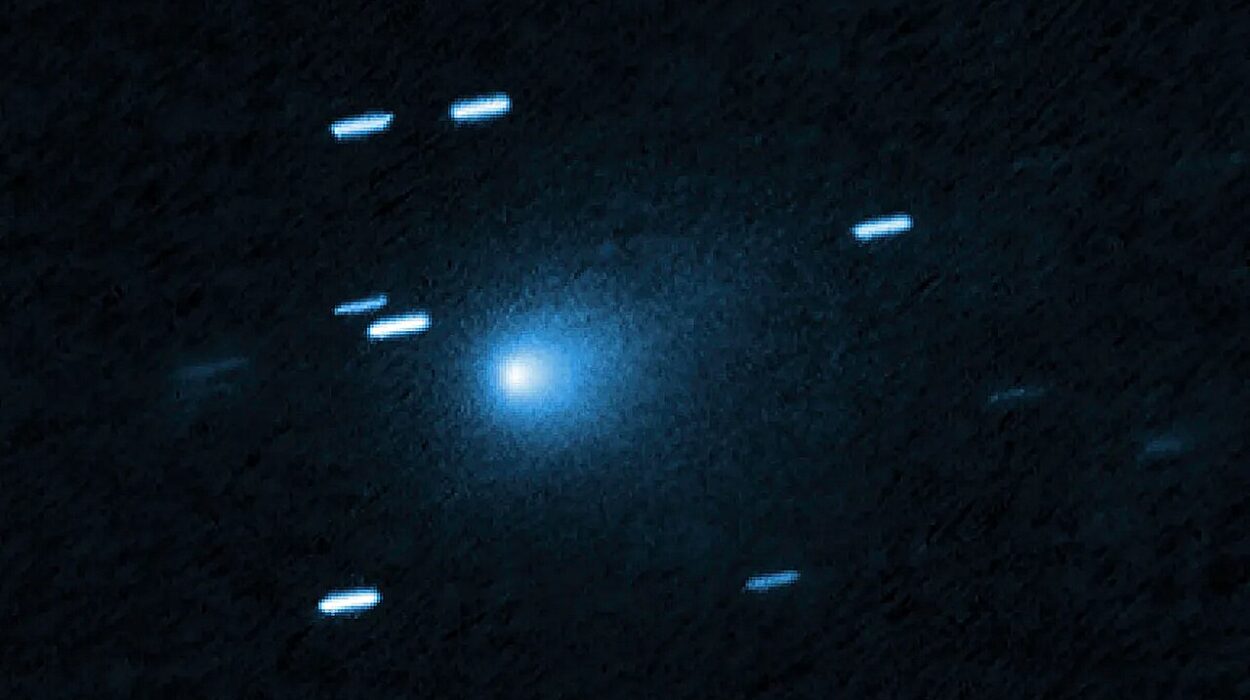New groundbreaking observations from the National Science Foundation’s National Radio Astronomy Observatory (NSF NRAO), utilizing the enhanced capabilities of the Karl G. Jansky Very Large Array (NSF VLA), offer compelling evidence that points to a universal mechanism guiding the collimation of astrophysical jets, regardless of their origin or the size of the system they are part of. The study, published in The Astrophysical Journal Letters, is focused on revealing the presence of a helical magnetic field in the HH 80-81 protostellar jet. Remarkably, this structure mirrors similar findings observed in jets originating from supermassive black holes at the centers of galaxies, providing a breakthrough in understanding the physics behind these energetic outflows.
Astrophysical jets are immense, highly collimated streams of matter and energy that are produced across the universe. They emanate from a variety of cosmic objects, ranging from young stars in the Milky Way galaxy to the supermassive black holes located in the centers of distant galaxies. These jets play a central role in shaping their host systems, influencing everything from star formation to galactic evolution. Despite their far-reaching impacts, the mechanisms behind the formation and stability of these jets have remained a longstanding mystery for astrophysicists, particularly regarding the ways in which they remain tightly collimated, preventing them from dispersing into the vastness of space.
This recent work, led by Adriana Rodríguez-Kamenetzky of the Institute of Theoretical and Experimental Astronomy (IATE), a part of the Argentinian National Scientific and Technical Research Council (CONICET), and the National University of Córdoba (UNC), provides the first concrete evidence that helical magnetic fields play a crucial role in collimating astrophysical jets across various scales. The detection of this helical magnetic structure in the HH 80-81 protostellar jet—the first of its kind in this context—supports the hypothesis that a universal collimation mechanism exists for jets of all sizes and origins.
In earlier research using the NSF VLA in 2010 and 2021, evidence was gathered to show the presence of magnetic fields in certain protostellar jets. These findings established the importance of helical magnetic fields in collimating the massive jets produced by supermassive black holes. However, although these studies indicated the significance of magnetic fields, direct confirmation of the helical structure in protostellar jets remained elusive due to the inherent challenges posed by the predominantly thermal emission of such jets, which made it difficult to study their magnetic fields with accuracy.
Carlos Carrasco-González, an astrophysicist at the Institute of Radio Astronomy and Astrophysics (IRyA) at the National Autonomous University of Mexico (UNAM), had noted the difficulty in obtaining 3D structural data on magnetic fields in protostellar jets despite previous observations. “Back in 2010, we used VLA to detect non-thermal emission and the presence of a magnetic field, but we couldn’t study its 3D structure,” he remarked. This limitation of past research hindered the full understanding of how magnetic fields contribute to jet collimation in these young stellar objects.
With the recent upgrade of the NSF VLA, the study by Rodríguez-Kamenetzky and her team took advantage of the telescope’s increased sensitivity and broader bandwidth. This provided the necessary tools to perform a detailed Rotation Measure (RM) analysis of the HH 80-81 jet, overcoming the limitations that had previously obstructed researchers’ ability to study the 3D structure of the magnetic field within protostellar jets. RM analysis is a technique that corrects for Faraday rotation, a phenomenon that causes light’s polarization to rotate as it travels through magnetized plasma. By accounting for this effect, scientists can unmask the true orientation and shape of the magnetic field lines that permeate the jet.
The study by the team led to the remarkable discovery that the HH 80-81 jet indeed has a helical magnetic field configuration, strongly suggesting that this magnetic structure plays a vital role in shaping the jet. Alice Pasetto, a researcher at IRyA-UNAM who contributed to the study, emphasized, “For the first time, we were able to study the 3D configuration of the magnetic field in a protostellar jet.” The successful application of RM analysis to the HH 80-81 jet marks a significant milestone, as it’s the first time this approach has been used successfully to reveal the structure of a protostellar jet.

An interesting aspect of this study is that researchers were able to analyze both the approaching and receding jets from HH 80-81, which is not always feasible in studies of jets from supermassive black holes. In protostellar jets, it is possible to observe both jets— the one moving toward us and the counterjet moving away— allowing for a more complete understanding of the magnetic field in action. Through this detailed analysis, the team concluded that the helical magnetic field is intrinsic to the disk-jet system of the protostar, not merely the result of interactions with the surrounding environment.
These groundbreaking findings lend strong support to the growing theory that helical magnetic fields are a universal mechanism for collimating astrophysical jets, regardless of whether they originate in the vicinity of a young star or a supermassive black hole. This insight is critical in advancing our understanding of astrophysical jets, helping to unravel the complex physical processes governing their formation, evolution, and sustained collimation. The existence of helical magnetic fields as a key player in jet dynamics ties together observations from vastly different cosmic environments, from the birth of stars in nebulae to the far-reaching jets streaming from the centers of galaxies.
Ultimately, this study provides an important contribution to the broader field of astrophysics by offering a unifying explanation for a fundamental question that has puzzled scientists for decades: how can astrophysical jets remain collimated over vast distances, preventing their dispersion as they travel through the cosmos? The universality of this mechanism further underscores the commonalities in the behavior of jets throughout the universe, no matter how varied their sources may be. The profound implications of these results reach beyond the HH 80-81 system and touch on our understanding of jet physics across the universe, strengthening the connections between different astrophysical phenomena and laying the groundwork for future studies of cosmic jets.
With the newfound evidence of helical magnetic fields, astronomers and astrophysicists now have a more robust foundation upon which to base their models of jet formation and collimation. These findings open new doors for further research into the interstellar and intergalactic effects of magnetic fields on jet dynamics, the impact these jets have on the evolution of galaxies and stars, and how such outflows influence the environment through which they propagate. In the coming years, continued advancements in observational technology, particularly at observatories like the NSF VLA, will undoubtedly deepen our understanding of this universal mechanism and refine our models of astrophysical jet behavior across different astrophysical scales.
Reference: A. Rodríguez-Kamenetzky et al, Helical Magnetic Field in a Massive Protostellar Jet, The Astrophysical Journal Letters (2025). DOI: 10.3847/2041-8213/ad9b26






